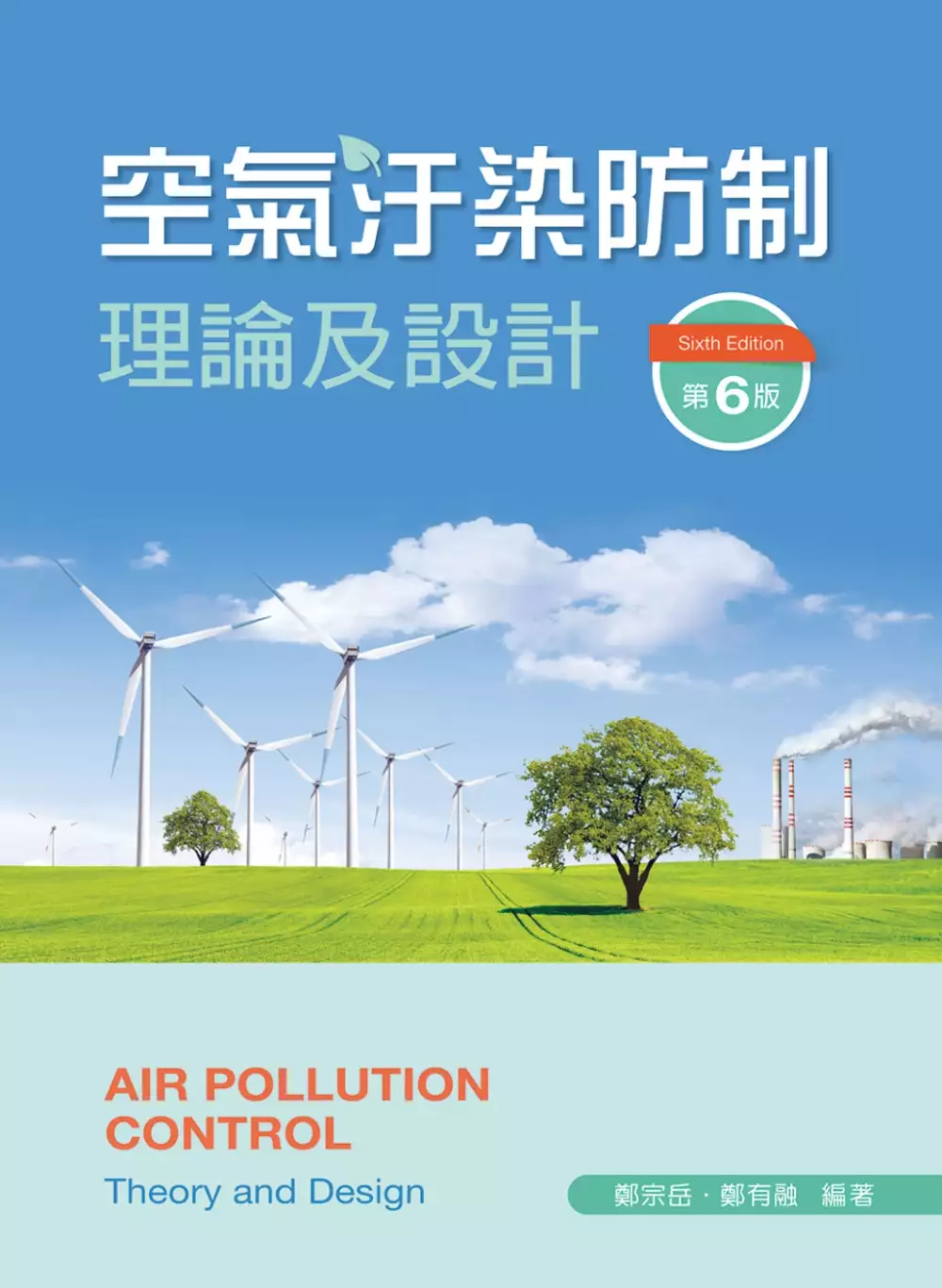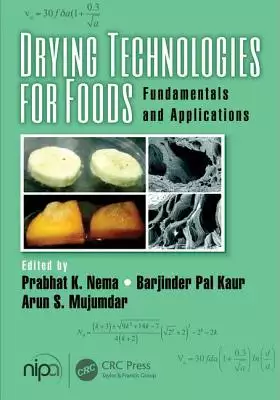Spray Dryer的問題,我們搜遍了碩博士論文和台灣出版的書籍,推薦鄭宗岳,林鴻祥寫的 空氣汙染防制理論及設計(第六版) 和Nema, Prabhat K. (EDT)/ Kaur, Barjinder Pal (EDT)/ Mujumdar, Aru的 Drying Technologies for Foods: Fundamentals and Applications都 可以從中找到所需的評價。
這兩本書分別來自新文京 和所出版 。
國立勤益科技大學 冷凍空調與能源系碩士班 楊愷祥所指導 王質富的 附加吸附除濕對乾燥系統性能影響實驗研究 (2021),提出Spray Dryer關鍵因素是什麼,來自於乾燥機、能源節省、乾燥能力、能量消耗。
而第二篇論文國立臺北科技大學 環境工程與管理研究所 PETER HECK、胡憲倫所指導 盧卡斯的 使用生命週期評估方法研究台灣商業魚菜共生系統之環境衝擊影響 (2021),提出因為有 Aquaponics、Life Cycle Assessment、Sustainability、Conventional Agriculture、Hydroponics、Aquaculture的重點而找出了 Spray Dryer的解答。
空氣汙染防制理論及設計(第六版)

為了解決Spray Dryer 的問題,作者鄭宗岳,林鴻祥 這樣論述:
本書匯集作者多年來在工作上之實務經驗、國內外相關期刊、設備設計文件及廠商型錄等寶貴資料,從理論原理至空氣污染防治設備之設計及選用,均作了相當詳細的說明及歸納整理,引導讀者有系統地吸收空氣污染控制技術理論及設計之精髓。自第一版出版以來,承蒙國內大專院校教授採用作為空氣污染防制相關課程教材或參考書籍,有志公職人士亦廣為推薦介紹,列為參加國家考試必備用書。 第六版配合國際上重大環保議題之進展及國民對空氣汙染等環保意識之抬頭(尤其是PM2.5議題),依國內最新環保法規和汙染防制設備及控制技術的最新發展,對本書內容進行增補修訂,並特別針對工業通風排氣章節(9-11)進行補述
。 同時,第六版將過去30年來環境工程及環保行政類科之國家考試歷屆試題(民國80年∼110年)及其參考解答,分別歸類納入每一章末之「歷屆國家考試試題精華」中,供讀者進一步研習,以增進對該章節主題之瞭解,亦可作為有志公職及進修人士之參考。
Spray Dryer進入發燒排行的影片
ミディアムヘアーの外ハネヘアの作り方!
巻き方のコツや、お気に入りスタイリング剤のご紹介です。
0:24 髪の悩み
1:18 ドライヤーで根元のうねりを伸ばす
2:34 コテで巻く
6:35 スタイリング剤をつける/お気に入りスタイリング剤
HOLISTIC CURE BLOW DRYER 14,300yen
https://room.rakuten.co.jp/room_a73d3cdf25/1700117023358151
HOLISTIC CURE CURL IRON 32mm 16,500yen
https://room.rakuten.co.jp/room_a73d3cdf25/1700117023078197
SALK THICKING SPRAY DRY TYPE 2,970yen
https://salk-hair.com
Yumedreaming EPICUREAN HAIR MIST HARD 3,850yen
https://room.rakuten.co.jp/room_a73d3cdf25/1700130488056182
NINE MULTI STYLING OIL RICH 3,080yen
https://room.rakuten.co.jp/room_a73d3cdf25/items
jamile fran Oil Souffle 2,200yen
https://room.rakuten.co.jp/room_a73d3cdf25/1700130488545194
〒107-6228
東京都港区赤坂9-7-1 ミッドタウン・タワー 28階
UUUM株式会社 佐藤優里亜宛
楽曲提供:Production Music by http://www.epidemicsound.com
styling
tops/MERI
https://www.rakuten.ne.jp/gold/meri/
earrings/L&Co. × YURIA SATO
◆公式L&Co.サイト特設ページ
https://l-co-shop.jp/collections/yuria
◆yahoo!サイト特設ページ
https://shopping.geocities.jp/l-co/yuria.html
◆楽天サイト特設ページ
https://www.rakuten.ne.jp/gold/l-co-since1937/yuria.html
lip/HONEYROA ハニーウォーターディップ 07 スパイス11%
佐藤優里亜
instagram @yuriang_
https://www.instagram.com/yuriang_/?h...
附加吸附除濕對乾燥系統性能影響實驗研究
為了解決Spray Dryer 的問題,作者王質富 這樣論述:
空氣溫度及濕度對乾燥系統性能之影響非常顯著,如持續時間及乾燥結果。本研究開發具有七種包含單一及混合模式的原型乾燥系統,並使用 Orbeez作為實驗之被乾燥物。傳統乾燥使用加熱過程來增加進氣溫度,進而增加空氣的顯熱,並利用該熱量使產品中所含的水分蒸發,本實驗於不同操作模式下控制電熱溫度於140 °C,使用鼓風機推動空氣循環5小時,並使用R-134a之熱泵及除溼輪以降低濕度乾燥並節約能耗。性能分析參數包含濕度比、MER、SMER、能量消耗,外加熱泵系統相對(DW + 加熱器)模式對MER值之影響較小,但在能耗方面,於混合模式下添加熱泵 (DW + HP+加熱器)與相對(DW + 加熱器)模式可降
低功耗 16%。在重量減少百分比方面,使用除溼輪+電加熱模式下具顯著效益,於實驗中Orbeez 材料的最大測試負載為 5 公斤之條件下,可減少了約 4.1 公斤之重量。
Drying Technologies for Foods: Fundamentals and Applications

為了解決Spray Dryer 的問題,作者Nema, Prabhat K. (EDT)/ Kaur, Barjinder Pal (EDT)/ Mujumdar, Aru 這樣論述:
Drying is an important unit operation used in industry for processing and preservation of food products. Although a large volume of technical literature is available on drying of foods, it is still challenging for scientists and engineers to improve continuously upon the quality of dried products an
d existing drying systems. This book will aid processors in their search for cost-effective and energy-efficient drying techniques allowing them to succeed commercially in their ventures as well as to fulfill consumer-demand for high-quality products. Drying Technologies for Foods contains state-of-
the art knowledge on several key aspects of drying ranging from fundamental principles, classification and selection, different types of conventional and modern techniques, drying of different food materials, advances in packaging of dried products, control and safety, energy calculation, modeling t
o advances in food drying.Comprehensive yet concise chapters cover different types of drying technologies; this book describes freeze, heat pump, spray, superheated steam, microwave drying and many other drying technologies. Discussion of specific food-related drying including drying of fruit, leath
er, medicinal herbs, cocoa and coffee beans, mushroom, and protein among others are covered in the book. Chapters are also presented on quality of dried food such as degradation mechanism and kinetics of vitamin C, antioxidants, delinquencies and caking phenomena. Control and safety, energy calculat
ions, modeling are also included with emphasis on industrial applications. Artificial Neural Networks and computational modeling techniques as well as application of computer vision in food drying followed by a chapter on advances in food dryer are covered in some detail, again highlighting potentia
l applications. Prabhat K. Nema is an Associate Professor and Head of the Department of Food Engineering at NIFTEM, India. He obtained B. Tech. in Agricultural Engg from JNKVV, Jabalpur (1995) and M. Tech. in Dairy & Food Engineering from IIT, Kharagpur in India (1997). He has experience of workin
g in Food Industry for about 4 years. He completed his PhD from IIT Kharagpur in Dairy and Food Engg (2008). He has more than 17 years of experience at various universities including NERIST (Itanagar, Arunachal Pradesh), JNKVV (Jabalpur, MP), RVSKVV (Gwalior, MP), AAU (Anand, Gujarat) and NIFTEM (Ku
ndli, Haryana). He has published research articles in journals of national and international repute. He is reviewer of many food related journals. He has been instrumental in developing labs, conducting funded research projects, guiding research projects for number of food professionals at UG, PG an
d PhD level. He offers consultancy services in the area of food processing. He is also recipient of Seligman APV Award by Society of Chemical Industry, London (UK) which enabled him to have research experience in the University of Reading (UK) in 2007. As a member of NIFTEM delegation, he has visite
d various academic and research institutions in Germany and the Netherland in 2013. He was awarded Travel Grant by Department of Science and Technology, Government of India to deliver Keynote speech and Chair Technical Session in Asia Pacific Drying Conference in Wuxi, China in 2017. He has organize
d First International Conference (2013), First and Second Drying Workshop (2014 & 2015) and various training programmes at NIFTEM.Barjinder Pal Kaur is Assistant Professor in the Department of Food Engineering NIFTEM, India. She obtained her B. Tech. (2006) in Agricultural Engineering and M. Tech. (
2009) in Processing and Food Engineering from Punjab Agricultural University, Ludhiana. She did her PhD from Indian Institute of Technology Kharagpur (2016). She is author of several scientific articles published in prestigious national and international journals. She has guided several MTech and BT
ech students as a research supervisor. She is also associated with various journals of international repute as an editorial board member and reviewer.Prof. Arun S. Mujumdar is an eminent Distinguished Professor who has worked with McGill University, Canada and National University of Singapore, Singa
pore as well as several esteemed universities around the world. He obtained B. Chem. Eng. (Distinction) from University of Mumbai followed by M. Eng. and Ph.D. from McGill University, Canada. He was awarded Doctor Honoris Causa, Lodz Tech. Univ., Poland & Lyon Univ., France. He has been a Distinguis
hed Engineering Fellow and Visiting Professor, Hong Kong University of Science & Technology, Hong Kong; Platinum Jubilee Distinguished Professor of Chemical Engineering, Institute of Chemical Technology, Mumbai, India & Adjunct Professor of Bioresource Engineering as well as Mining and Materials Eng
g at McGill University, Canada. He has served as Professor, Department of Mechanical Engineering (2000-2013) & as a Director, Minerals, Metals & Materials Technology Centre (M3TC) (2006-2013) at National University of Singapore, Singapore. At present he is also associated with NIFTEM, India as Profe
ssor Emeritus in the Department of Food Engg as well as with the Department of Chemical & Biochemical Engineering, Western University, London, Ontario, Canada. Professor Mujumdar, Editor-in-Chief of Drying Technology -An International Journal, is popularly known as Drying Guru and a world class Phil
osopher and Practitioner, a Mentor, an Organizer, a Leader and above all a Distinguished Prolific Researcher in Multidisciplinary fields. He has published more than 500 journal publications with over 350 conference papers and over 75 plenary / keynote lectures at international conferences. He has to
his credit more than 50 international conferences as Organizer / Chair of Scientific Committees. He has guided 60 PhDs and 40 post-doctoral fellows. Prof. Mujumdar has 3 authored books; 60+ edited books; 120+ book chapters and 8 e-books. He was President and Principal Consultant, Exergex Corp., Can
ada, (1989-2000) and has consulted for over 70 companies. He has won numerous major international awards, He is the only recipient of two highest level national awards by the Government of China for International Cooperation in Science and Technology in January 2014 and the Friendship Award in Septe
mber 2014.
使用生命週期評估方法研究台灣商業魚菜共生系統之環境衝擊影響
為了解決Spray Dryer 的問題,作者盧卡斯 這樣論述:
台灣作為島國,由於可供耕作的土地面積有限,因此在糧食方面高度依賴進口。由於氣候變遷影響,每年糧食產量將會減少,同時由於人口持續增長,糧食需求將持續增加。本研究在過往的研究案例中過往的研究主要是針對農業上使用化石燃料、化肥和殺蟲劑等行為對環境和人類健康產生的負面影響。因此,有必要發展和改進現今農業的流程,以解決傳統糧食生產系統引起的例如營養污染等不利影響,以提高永續性。魚菜共生是水培法和水產養殖的結合,有望成為一種永續的食品生產方法。這種方法在近年來越來越流行,因為此方法對環境的衝擊影響低於其他農業類型。因此,探索魚菜共生系統對環境的影響可以為台灣的食品安全做出貢獻。因此,目前的研究使用了生命
週期評估 (LCA)工具來評估台灣宜蘭魚菜養殖場魚和生菜生產對環境的影響。從搖籃到農場大門的角度研究了兩個功能單位:1 公斤魚和 1 公斤生菜。本研究使用了SimaPro,並在方法學選擇了ReCiPe和累積能源需求 (CED) 方法,評估了全球變暖潛能值 (GWP)、陸地酸化 (TA)、淡水優養化化 (FWE)、海水優養化化 (MWE)、土地利用 (LU)、用水量 (WC) 和農場的能源需求等環境衝擊評估指標。1 kg 生菜會造成 11.48 kg CO2eq (GWP)、0.04 kg SO2eq (TA)、0.01 kg Peq (FWE)、1.2E-3 kg Neq (MWE)、1 m2
a eq (LU)、0.328 m3 (WC) 和207 兆焦耳 (CED)。 1 kg 魚會造成14.03 kg CO2eq (GWP)、0.049 kg SO2eq (TA)、0.012 kg Peq (FWE)、1.4E-3kg Neq (MWE)、1.22 m2a eq (LU)、0.402 m3 (WC) 和254 兆焦耳 (CED)。並將本研究結果與傳統農業、水培、氣培和水產養殖的等過往文獻研究進行了比較。 結果發現魚菜共生與其他的萵苣生產方式相比,魚菜共生在除了GWP 和 CED兩個衝擊指標以外,其餘的環境衝擊影響皆大於其他的生產方式。然而,環境永續性情境的分析結果表明,GWP、
TA、FWE、MWE、LU 和 CED這些類別的環境影響分別對於兩個功能單元可以顯著降低 70%、38%、58%、27%、14% 和 62%。可以通過用魚菜共生污泥代替肥料、加入黑水虻幼蟲作為魚飼料以及在溫室屋頂上加裝太陽能系統來降低環境衝擊。通過實施這些方法,魚菜共生系統的魚類生產將可以有比大多數的水產養殖系統更低的環境衝擊。因此,魚菜共生系統是相比於其他水產養殖系統、更有發展潛力的替代方案。對建議方法的優化以及對可行性的進一步評估將有助於對魚菜共生作為農業系統的永續性做出長期決策,進而為台灣的糧食安全做出貢獻。